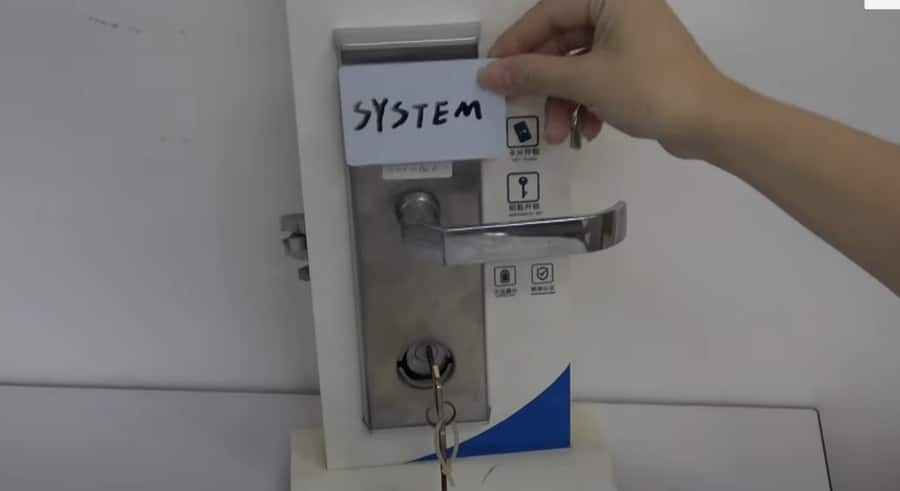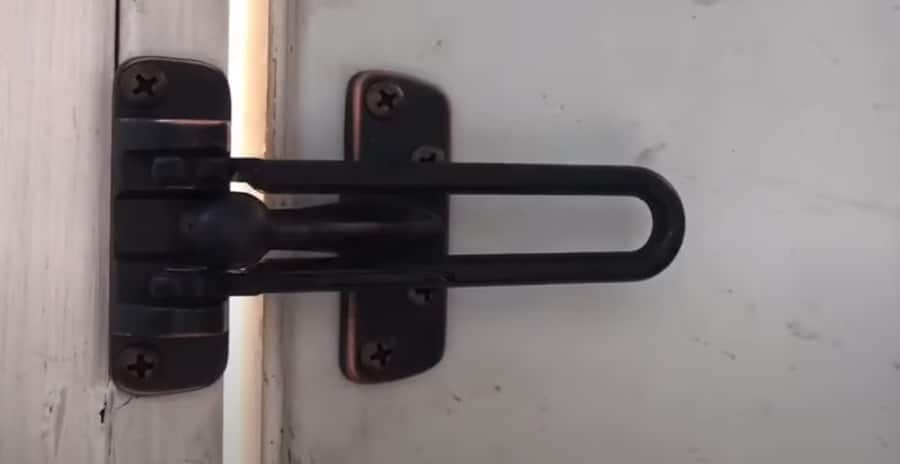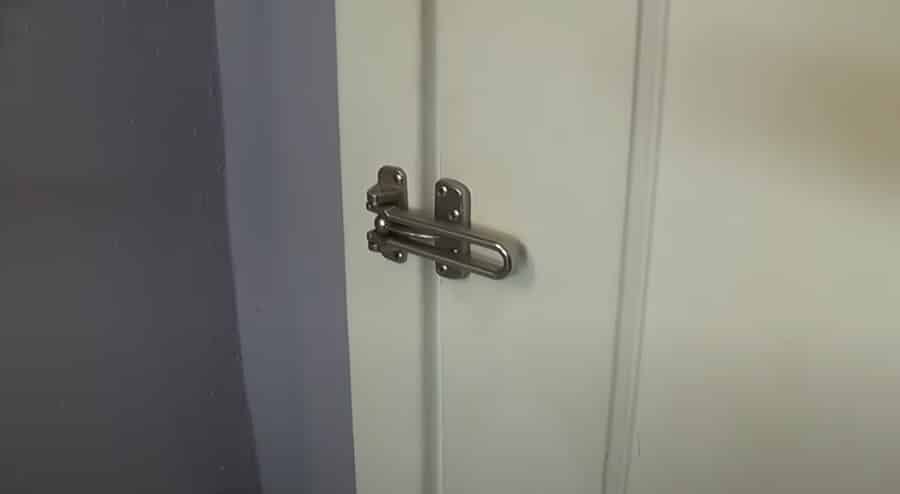This article aims to show how to open hotel door latches in legitimate scenarios and emergencies, such as by authorized personnel or guests with proper access.
Introduction
Hotel door security is a crucial aspect of the hospitality industry, ensuring the safety and privacy of guests. Understanding the mechanisms and functionality of hotel door latches is essential for hotel staff and guests to feel secure during their stay. This knowledge becomes particularly important in emergencies or when dealing with security concerns.
This article aims to show how to open hotel door latches in legitimate scenarios and emergencies, such as by authorized personnel or guests with proper access.
Traditional Methods

Opening a hotel door latch is typically straightforward, but understanding the correct procedure is crucial for safety and security. Below is a step-by-step guide on legitimately opening various hotel door latches.
It’s important to note that these methods should only be used by authorized individuals, such as registered guests or hotel staff, in compliance with legal and ethical standards.
Prepare Necessary Tools:
Electronic Key Card, Physical Key, or Master Key: For accessing rooms in case of lockouts or emergencies. Hotels usually have master keys or electronic key cards to unlock any room. These are typically held by security personnel or hotel management.
- Using a Keycard with Electronic Locks
- Step 1: Insert or tap the keycard onto the card reader. Most modern hotel doors use magnetic stripes or RFID keycards.
- Step 2: Wait for the indicator light. A green light usually signals that the door has been unlocked.
- Step 3: Turn the door handle and open the door. Some electronic locks may require pulling the handle upwards or down, depending on the design.
- Using a Physical Key with Traditional Locks
- Step 1: Insert the key into the keyhole.
- Step 2: Turn the key gently but firmly in the designated direction until you feel the lock disengage.
- Step 3: Turn the door handle and open the door.
- Emergency Access Procedures
- Step 1: In cases where emergency access is required (e.g., guest lockout or emergencies), a master key or override code is often used. This should only be done by authorized personnel.
- Step 2: For electronic locks, enter the override code or use the master keycard. For mechanical locks, a master key is typically used.
- Step 3: Once access is gained, ensure the door is re-secured or left open, as appropriate.
- Disengaging Additional Security Devices
- If the door has secondary security devices like deadbolts, security chains, or swing bars, these must be disengaged manually from inside the room.
Understanding these steps ensures that hotel doors are accessed correctly and responsibly, maintaining the integrity of the hotel’s security system.
How to open a hotel door latch for emergencies?

Opening a hotel door latch from the outside for legitimate reasons or emergencies requires a careful approach to ensure safety and minimize potential damage.
Prepare Necessary Tools
When attempting to open a hotel door latch for emergencies, it’s essential to use the right tools to ensure the process is efficient. It minimizes potential damage to the door or latch. Here are some necessary tools and their applications:
- The hotel door latch opener tool allows hotel employees and emergency personnel to gain immediate entry through doors with a locked swing arm security latch. In emergencies, it’s crucial to access a room swiftly; this tool facilitates that without causing damage to the door or frame.
- Latch Slip Tool: For bypassing swing bar latches. A thin, flexible tool designed to slip between the door and frame, lifting the swing bar off its catch.
- Plastic Door Shim: Similar to the latch slip tool, bypassing swing bar latches. A thin, flexible plastic sheet can be inserted between the door and frame to disengage the latch.
- Under-the-Door Tool: For manipulating the inside door handle or latch from the outside. A long, flexible tool that can be slid under the door, allowing the user to pull down on the inside door handle or disengage a latch.
It’s crucial to emphasize that these tools should only be used for legitimate reasons and emergencies. Unauthorized use can lead to legal consequences and is considered a breach of privacy.
Here’s a step-by-step guide:
- Assess the Situation: Before opening the door, ensure there’s a genuine reason, such as a medical emergency, fire, or a guest lockout. Notify hotel security or management about the situation.
- Use the Emergency Access Tool: Some hotels equip their staff with an emergency access tool designed to disengage the swing bar latch from the outside. Insert the tool between the door and the frame, maneuvering it to lift the swing bar off its catch.
- Alternative Methods:
- Preparation: Ensure you have a legitimate reason to open the door from the outside. Gather necessary tools, including a thin plastic card, a latch slip tool, or a thin metal strip.
- Inspect the Gap: Before disengaging the latch, inspect the gap between the door and frame. This will give you an idea of the space you have to work with.
- Insert the Tool: Gently insert your chosen tool into the gap above the swing bar. Aim for the area where the swing bar meets the catch plate.
- Apply Pressure: With gentle but firm pressure, maneuver the tool downwards, trying to push the swing bar up and off the catch plate. The goal is to disengage the swing bar from the catch plate without damaging any components.
- Open the Door: Once the swing bar is disengaged, you should be able to open the door fully. Act quickly, especially if using a thin plastic card, as the swing bar might fall back into place.
- Safety First: Always be cautious when applying pressure to avoid damaging the door or latch or injuring yourself. If the latch doesn’t disengage after several attempts, it might be best to seek professional assistance.
- After Access: Once the door is opened, ensure the guest’s safety and address the reason for the emergency. If the door or latch was damaged during the process, report it to hotel maintenance for repair.
- Documentation: Document the incident, detailing the reason for accessing the room, the methods used, any damages, and the outcome. This documentation is essential for transparency and potential liability issues.
Unlock the Hotel Door Latch Lock (break into the hotel room from outside)
Remember, always prioritize the safety and privacy of hotel guests. Unauthorized or unnecessary attempts to open a hotel door latch can be considered an invasion of privacy and may have legal consequences. Ensure there’s a valid reason and, when possible, obtain permission or notify the guest before opening the latch.

Ensuring the security of hotel rooms against unauthorized access is paramount. Advanced lock systems and additional security measures are crucial in safeguarding guests and their belongings. Here, we explore techniques and technologies, including those employed by leading brands like dormakaba and Ilco, and discuss additional measures for enhanced security.
- Advanced Locking Systems
- Electronic Locks: Modern hotel doors often use electronic locks integrated with RFID or NFC technology. Brands like dormakaba and Ilco offer locks that can be programmed for specific guest keycards, ensuring that only authorized keycards grant access.
- RFID (Radio-Frequency Identification): RFID hotel locks, such as those from dormakaba and Ilco, use keycards with embedded chips that communicate with the lock via radio waves. This technology is highly secure as it is difficult to duplicate and can be easily deactivated if lost or stolen.
- NFC (Near Field Communication): NFC enables mobile devices to act as keycards. Guests can unlock their rooms using their smartphones, reducing the risk of lost keycards and allowing for remote issuing and revoking access.
- Biometric Systems: Some high-end hotels are adopting biometric systems like fingerprint or facial recognition for access, offering a high level of security personalized to each guest.
- Audit Trails: Many electronic lock systems maintain an audit trail, recording each instance of the door being unlocked, which can be crucial in investigating security breaches.
- Time-based Restrictions: These locks can be programmed to allow access only during a specified time frame, adding an extra layer of security.
- Secondary Locks
- Deadbolts and Deadlatches: For additional security, many hotel doors are equipped with manual deadbolts or deadlatches, which can only be operated from inside the room.
- High-Security Door Chains and Swing Bars: These allow the door to be partially opened to verify a visitor’s identity while keeping it secured.
- Portable hotel door locks: Portable hotel door locks are portable and small to help you easily lock the hotel door from the inside.
- Electronic Alert Systems
- Door Ajar Alarms: Some hotel rooms are equipped with systems that alert the front desk or security if a door is left ajar for an extended period.
- Access Alarms: Alarms that trigger when a door is forced open or when an invalid keycard is repeatedly used can deter unauthorized entry and alert hotel staff.
- Regular Maintenance and Updates
- Regularly updating software and firmware of electronic locks is crucial to protect against hacking or tampering.
- Physical inspection and maintenance of locks ensure they function correctly and remain tamper-proof.
- Staff Training and Awareness
- Training hotel staff to be vigilant about security procedures and recognize suspicious behavior is vital in preventing unauthorized access.
- Encouraging guests to use the additional security features provided, like engaging the deadbolt or security chain, can significantly enhance room security.
By combining advanced lock technologies with additional security measures and vigilant practices, hotels can create a secure environment that protects their guests and property.
Conclusion
Hotel door latches, while seemingly simple devices, play a crucial role in ensuring the safety and privacy of guests. Throughout this article, we’ve delved into the intricacies of these latches, exploring their design, functionality, and the techniques to open them, both traditionally and through unconventional means.
In conclusion, while exploring the mechanisms behind hotel door latches, and the methods to open them is fascinating, it’s paramount to remember the core principle they stand for security. As we navigate the world of locks and latches, let’s prioritize safety, respect privacy, and uphold the ethical standards that ensure a secure environment.
Disclaimer
The information provided in this article is intended for educational and informational purposes only. While we aim to enlighten readers about the intricacies of hotel door latches and the methods to open them, it’s crucial to approach this knowledge with a sense of responsibility and ethics.

